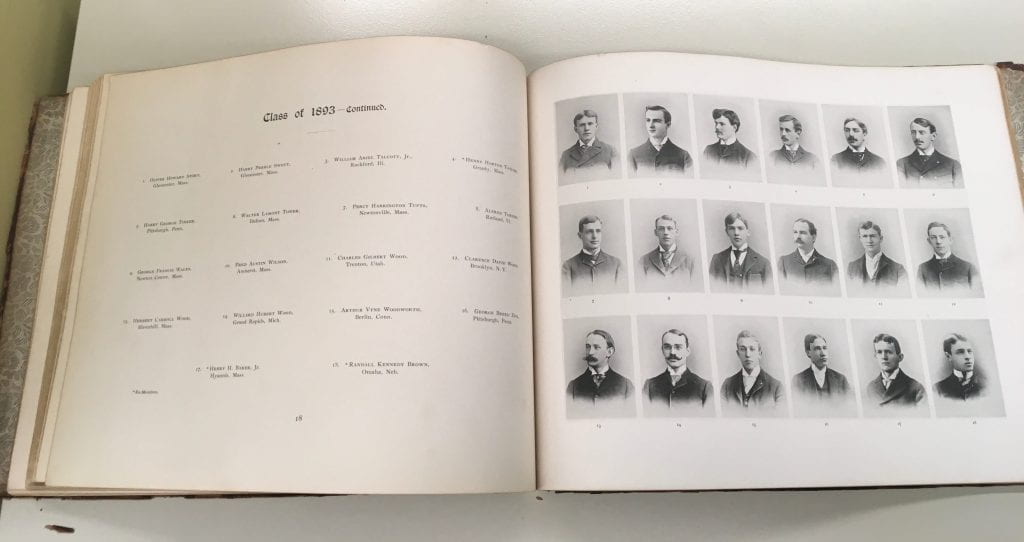Earlier this year I wrote up a brief description of the Class Albums we will digitize for the upcoming Bicentennial celebration in 2021. This week I spent a little more time reviewing these materials and came up with some interesting tidbits.

Our class albums range from the 1850s through 1906, but they change considerably over that span. The earliest volumes include photographs printed directly onto the pages of the book, usually with a blank facing page that was used for autographs and personal messages. Here’s an example from 1859:
The inscription from Fred Billings to Thomas Boss (both Class of 1859) reads, in part:
“…we have drank the fragrant mocha in clouds of the divine smoke and I can remember of nothing which has interrupted our friendship through college life.”
After the 1850s, the format of these albums changes. For the 1860s through the 1880s, the albums are commercially produced blank photo albums into which separate printed images were filed, like this example from 1887:
Addison Allen’s album from 1887 is among the very largest in our collection, which makes these items from 1888 really stand out:

Instead of a massive volume filled with individual prints, these two slim volumes include just a handful of pages.

The volume of “Views” holds just two photographs that are composite images of several photographs of campus. Similarly, the pictures of the graduating class have been compressed into just three pages:

Similar albums of composite photographs were produced for the next couple of years, but another big change came with the 1893 “Amherst Portfolio”:
These volumes are remarkably similar to what we think of as yearbooks, featuring photographs of students and faculty along with extensive coverage of student groups.


Although this volume closely resembles a modern yearbook, a glance into the 1893 Olio shows how different the two books are. The 1893 Olio contains very few photographs and contains much more extensive text.
The name of the book changes over the next decade or so — “The Class Book,” “The Class Portfolio,” and “The Senior Class Book” for instance — but the last one appears in 1906. By that point, the Olio included many more photographs and continued to include extensive text about student activities and college life. It appears that demand for two books that reproduced essentially the same information waned in the early 20th century and no class albums were produced after 1906.
Our plan for the Bicentennial is to digitize one class album per year from 1853 through 1906. If anyone has an album from the class of 1892, that is the one year for which we have no class albums!





